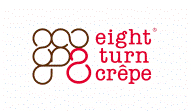表示形式
表示切替
開催月で表示
- 2025年05月
- 2025年06月
- 2025年07月
- 2025年08月
- 2025年09月
- 2025年10月
- 2025年11月
- 2025年12月
- 2026年01月
- 2026年02月
- 2026年03月
- 2026年04月
- 2026年05月
カテゴリ別に表示
戻る
2023年10月13日~2023年11月22日 / New York City (Diamond District), New York / その他

| 会場 | 日本クラブWEBギャラリー |
|---|---|
| 住所 | 145 West 57th Street, New York City (Diamond District), New York, 10019 USA |
| 日程 | 2023年10月13日~2023年11月22日 |
| 時間 |
- [時間詳細]
- [アクセス]
- [会場詳細]
日本クラブWEBギャラリー企画展 『博多の伝統工芸「曲物」「張子」「今宿人形」-女性職人が引継ぐものづくりの美と技-』


- [お問い合わせ先]
- gallery@nipponclub.org
- [登録者]The Nippon Club
- [言語]日本語
- 登録日 : 2023/09/25
- 掲載日 : 2023/09/25
- 変更日 : 2023/09/25
- 総閲覧数 : 737 人
- お店を検索するなら『タウンガイド』
-
- おしゃれな雰囲気と、居酒屋メニューのベストマッチングをお楽しみください。

-
おしゃれな雰囲気の中、居酒屋メニューやおまかせ寿司、そして、日本酒、ワインも織り交ぜながら、マンハッタンを謳歌して頂けます。
+1 (212) 986-2800WANO
-

-
+1 (646) 590-3276Ramen Ishida
-
- 車の事なら何でも気軽にご相談ください。一般修理から定期点検まで!技術を習得した頼...

-
SAEILO MOTORSは45年以上に渡り、自動車修理業に携わり、今日まで信頼と実績を積み重ねて参りました。豊富な経験と、長年培った技術を活かし、あらゆる自動車のトラブルを、迅速に解決いたします!お客様の車のメンテナンス、点検、修理、チューンアップ、そのほか車に関することでしたらなんでもご相談ください!NJのミツワまで徒歩5分、車で1分!Edgewater Commonsaモールまですぐなので、...
+1 (201) 840-0010Saeilo Motors
-
- 最高品質のシーフードをはじめ高級食材(キャビアなど)・こだわりの日本食品をご家庭...

-
日本から、世界から。本マグロのトロ、赤身、ハマチやサーモン。ヤマシーフードのお魚は星付きレストランでも採用されています。おいしいお魚でおいしいおうちごはんを!
+1 (201) 433-3888YAMA SEAFOOD
-
- BCネットワーク(ニュージャージー)は乳がん治療後の生活の取り組み、乳がん早期発...

-
BCネットワークは,アメリカ認定の非営利団体です。 日米両国に在住の日本人女性達に乳がんに関する最新の情報 、乳がん治療後の生活の取り組み、乳がん早期発見、 啓発情報発信を押し進めていく非営利団体です。 Knowledge is power. 正しい知識は患者自身の力、支えになると信じて活動しています 。
+1 (201) 400-9629Young Japanese Breast Cancer Network / NJ
-
- 全米で日本語を話す医療者と患者をつなぎ、日本人コミュニティに向けた医療情報やサポ...

-
「FLAT・ふらっと」は、ニューヨークを拠点に全米で活動する非営利団体で、日本語を話す医療者と患者をつなぎ、日本人コミュニティをサポートしています。アメリカでの医療や保険の複雑さに直面する日本人やその介護者、高齢化に伴い孤立するシニアが増加する中、私たちは必要な情報やサポートを提供しています。オンライン活動も活発に行っており、ニューヨーク以外にお住まいの方でも気軽にご参加いただけます。健康に関する...
+1 (772) 349-9459FLAT ・ふらっと
-
- グランドセントラル駅前の理学療法クリニック+ウェルネスセンター。腰痛、肩こりから...

-
ミッドタウンのグランドセントラル駅前にある理学療法クリニック。日本語でのサービス。海外旅行者保険、ネットワーク外医療保険を取り扱っています。腰痛、肩こりから原因不明のめまいや頭痛など、どのような症状にも対応しできる根本治療を行っています。ダンサーやアスリートへの治療を多く行っており、治療の効果をあげる様々なクラスやワークショップも提供しています。OMPTウェルネスセンターではヨガ、ピラティス、HI...
+1 (212) 695-2769Orthopedic Movement Physical Therapy + OMPT ウェルネスセンター
-
- ビザ申請ならニューヨークの移民弁護士、ロジャーアルゲイズにお任せください。H1-...

-
移民弁護士を専門とし35年以上。H1-B、O1、J1、結婚や雇用ベースでのグリーンカード申請、Labor Certification Application(労働証明申請)など各種ビザ取り扱っています。柔軟な対応と、良心的な価格で皆様のビザ問題を解決します。
+1 (212) 724-5643ロジャーアルゲイズ法律事務所
-
- エイトターンクレープでは、新鮮な素材を使ったグルテンフリーの美味しい和風クレープ...

-
100%グルテンフリークレープEight Turn Crepeの一番の特徴はグルテンフリーの米粉を使用していること!より多くのお客様に楽しんでいただくためにグルテンフリーの米粉で生地を作っています。朝食・ランチ・ディナー・デザートどのお食事としても楽しんでいただけるように甘いものから塩味のあるものまで幅広くご用意しております。
+1 (929) 358-7988Eight Turn Crepe
-
- 1992年創設、全米最大の日本人 サッカーチーム。サッカーをまだ本格的にしたい、...

-
毎週土曜の朝、East River Parkで爽やかに汗を流し、シーズン中は土曜日又は日曜日に日本を代表してCOSMOPOLITAN SOCCER LEAGUE 2nd Divisionで世界を相手に戦います。様々なスキル、経験、性別、年齢のプレーヤーが集まり爽やかな汗を流す。何故かその居心地の良さに皆、土曜日の早朝から集まってワイワイとボールを蹴る。そしてシーズン中は、NY近辺で最も大きく歴史と...
FC Japan NYC
-
- 困っていることについて一緒に考えてみませんか?どんなことでもご相談できます。

-
True ResourceCoaching & Consultingトゥルーリソースのコーチングとコンサルティングについてアメリカでの生活、毎日をもっと明るく、楽しく過ごすために――日々の中で「ちょっと困っていること」「誰かに相談したいこと」はありませんか?文化の違いや人間関係のすれ違い、言葉ではうまく言い表せないモヤモヤ…。実は、多くの在米日本人の方が、そういった悩みを抱えています。True R...
+1 (424) 625-8720True Resource Coaching & Consulting
-
- ニューヨークの歯科医院。技術を第一として、治療のみではなくアフターケアとメインテ...

-
■痛みについて痛みを伴わない治療が理想です。治療中の痛みや苦痛を最小限に抑える成果が実っています。■前歯について仮の歯(試作品)を作り、患者さんの好みに合わせて理想的なモデルを作ります。色や形はあなたの納得がいくまで調節します。■咬み合わせについて咬み合わせの確認は、十分に必要なだけ何度も致します。■日常生活について治療期間中でも、普段の生活が不便のないように処置をしておりますので、普通の生活が続...
+1 (212) 758-9965Shunzo Ozawa D.D.S.
-
- 割引キャンペーン中!手足同時施術も可能です。是非、日本レベルのネイルを体験しにお...

-
日本のジェルメーカーのカラー、マグネット等、300色以上取り揃えています。日本人ネイリストが丁寧に施術致しますので言葉に不安な方もご安心下さい。
+1 (646) 370-4170Marie Nails Soho
-
- 教育理念「本気でやる子を育てる」を、ニューヨークでも実践します。最新の受験情報と...

-
教育理念「本気でやる子を育てる」を、ニューヨークでも実践します。日本で中学受験・高校受験をされる方のための、進学塾「早稲田アカデミー」。日本国内の教材・カリキュラムをもとに、「帰国生入試」に精通したスタッフが、授業・進路指導を行います。また、最新の入試情報も随時提供してまいります。まずはお気軽に、お問い合わせください。
+1 (914) 698-1100早稲田アカデミー ニューヨーク校
-
- ニューヨークのジャパン・ソサエティー語学センターは、北米で最大規模を誇るニューヨ...

-
ジャパン・ソサエティー語学センター1972年に開始されたジャパン・ソサエティーの語学センターは、北米で最大規模を誇るニューヨーク市の日本語教育機関です。センターでは1年を通し、日本語講座の他に、書道、日本語教師養成講座、日本人向け英会話教室など、さまざまなクラス、ワークショップ、また集中講座を開講しています。また、毎月一度、ニューヨークに住む日本人と日本語を学ぶニューヨーカーが一堂に会し、「日本語...
+1 (212) 715-1269Japan Society Language Center

















博多曲物の起源は一説には神功皇后の時代まで遡るとも言われており、元禄時代の貝原益軒の著「筑前国続風土記」によると、当時、筥崎八幡宮の祭事用具として使われていたとのことです。杉や桧の板に熱を加えて曲げ、桜の皮で綴じて作り、おひつや弁当箱などの日用品の他、茶の湯道具等が製作されています。他の地域の曲物と異なるところは、漆などで塗りを施さず、木そのものの木目を生かしている点です。また、曲物に直接絵を描くことも博多特有です。特に子どもの成長を祝う七五三・生後100日祝いのお食い初めなどに使うお膳の「ポッポ膳」は他の地域にはない博多独特のもので、お祝いに欠かせない「松竹梅」と「鶴亀」が描かれています。本展では、福岡市内に残る2軒の曲物店の一つ「柴田徳商店」の柴田淑子氏と職人さんたちにより制作された曲物をご紹介します。
博多張子は、江戸時代から縁起物として作られてきた歴史があり、虎やダルマなど縁起のいい作品が今でもたくさん作られています。作り方は江戸時代とほとんど同じで、土や木で作った型に、上質な手すきの和紙と新聞紙を小麦粉のりで張り合わせて作ります。張り付けるたびに表面を整え天日で乾かし後、型を取り出し最後はひとつひとつ手描きで彩色する手間のかかる民芸品です。戦前まで張子を製作する店は博多に十数軒ありましたが、現在では2軒のみが伝統を引き継いでいます。今回はその内の1軒、三浦隆(5代目張子師)氏と後継者として名乗りをあげたご子息のお嫁さんの智子さんによる作品をご紹介します。張子の虎は、平成10年(1998)日本郵便記念切手に採用されたことにより日本の全国民に知れ渡りました。
博多人形の母体となった民俗土人形の今宿人形は、明治38年に大橋清助氏が、今宿に節句人形「人清」を開いたのがはじまりです。伝統的な生活文化や伝承文化、信仰など人々の暮らしに結び付いたものが多く、代表的なものに、火災・盗難よけの「猿面」や「笹野才蔵(ささのさいぞう)」と、「おたふく面」などがあります。素朴な中にも温かみのある今宿人形は、多くの人々に愛されてきました。現在清助氏と2代目の重雄氏が大切に使ってきた土型を引き継ぎ、重雄氏の姪の佐藤由美子氏が伝統を守り続けています。本展では、家族に支えられながら今宿人形の作品を作っておられる由美子氏と、博多人形の伝統工芸士で日展などの審査員をされているご主人の佐藤好昭氏による創作土人形もご紹介します。由美子氏は、古い中に新しいものがあるからそれを守りながら、人形作りの1番大事なものは粘土だという思いから地元の七隈(福岡市城南区)の粘土を使った人形を残していきたいとのことです。
女性職人たちが引き継ぐものづくりの美と技をお楽しみ下さい。
主催:日本クラブ
協賛:J.C.C. Fund(ニューヨーク日本商工会議所基金)
協力:関彰商事株式会社
博多伝統職の会
キュレーター:津延美衣
<バーチャル・オープニングレセプション>
博多張子の三浦智子氏、今宿人形の佐藤由美子氏、博多曲物の北島徳子氏に生出演を頂き、お話を伺います。エンターテイメントは、ニューヨークで活躍する福岡出身のミュージシャンたち、松尾恵里佳氏(ボーカル)、脇義典氏(ベース)、石川政実氏(ギター)、井上貴士氏(ドラム)のカルテットによるジャズの演奏をお楽しみ頂きます。
■ 10月13日(金)
■ 午後7 ~8 時(ET)
■ 参加費:無料(先着500名様まで)
お申し込みはこちらから: https://us02web.zoom.us/webinar/register/WN_HmaGqLsXQvuH_XDIDk_5DQ#/registration